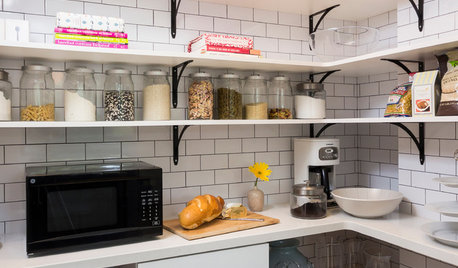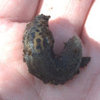Are Beneficial Nematodes the way to go?
surfgirl
13 years ago
Related Stories

EARTH DAYHow to Help Your Town’s Beneficial Birds and Bugs
Make a habitat using local materials to provide a home to the creatures that help our gardens
Full Story
GARDENING GUIDES4 Ways Gardens Can Go Beyond Aesthetic Beauty
Our landscapes can play an even more meaningful role if we rethink their purpose
Full Story
DECLUTTERINGHow to Declutter Without Going Minimalist
Here are 10 ways to get your home tidy and organized while keeping that personal touch
Full Story
LANDSCAPE DESIGNDare to Go Gray in the Garden
Use neutral gray as a soother, a buffer and a framework for plants in many colors
Full Story
GARDENING AND LANDSCAPINGHow to Make a Pond
You can make an outdoor fish paradise of your own, for less than you might think. But you'll need this expert design wisdom
Full Story
WINDOW TREATMENTSHow Low Should Your Drapes Go?
Hover, brush the floor or pool like Scarlett O'Hara's tears — we give you the lowdown on curtain length options
Full Story
SAVING WATERHouzz Call: Are You Letting Go of Your Lawn?
Many facing a drought are swapping turf for less thirsty plantings. If you’re one of them, we’d like to hear about it
Full Story
GARDENING FOR BUTTERFLIES3 Ways Native Plants Make Gardening So Much Better
You probably know about the lower maintenance. But native plants' other benefits go far beyond a little less watering and weeding
Full Story
GARDENING GUIDESNew Ways to Think About All That Mulch in the Garden
Before you go making a mountain out of a mulch hill, learn the facts about what your plants and soil really want
Full Story
ROOM OF THE DAYRoom of the Day: Making Way for a New Life in Austin
With cancer behind her, a Texas homeowner gets rid of boxes and clutter in her living room too
Full StoryMore Discussions






jean001
surfgirlOriginal Author
Related Professionals
New Bedford Landscape Architects & Landscape Designers · Accokeek Landscape Architects & Landscape Designers · Grand Haven Landscape Architects & Landscape Designers · Norton Shores Landscape Architects & Landscape Designers · Anderson Landscape Contractors · Wilmington Landscape Contractors · Bridgeview Landscape Contractors · Hawthorne Landscape Contractors · Paso Robles Landscape Contractors · Peoria Landscape Contractors · Riverview Landscape Contractors · Saint George Landscape Contractors · Vacaville Landscape Contractors · Wickliffe Landscape Contractors · Suisun City Landscape ContractorsKimmsr
jean001
surfgirlOriginal Author
sandy12450
Kimmsr
sandy12450
zzackey
Kimmsr